Flags of Countries that Start with C
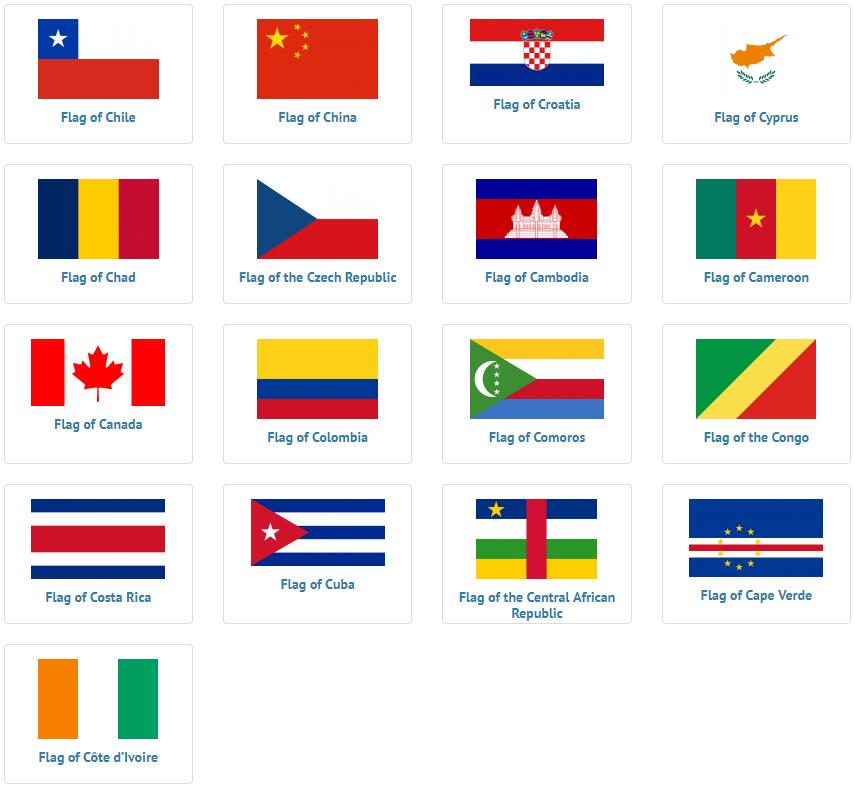
How many countries beginning with C? There are a total of 17 countries starting with letter C among the 193 countries in the world:
- Cambodia
- Cameroon
- Canada
- Cape Verde
- Central African Republic
- Chad
- Chile
- China
- Colombia
- Comoros
- Cook Islands
- Costa Rica
- Côte d’Ivoire
- Croatia
- Cuba
- Cyprus
- Czech Republic
Cyprus
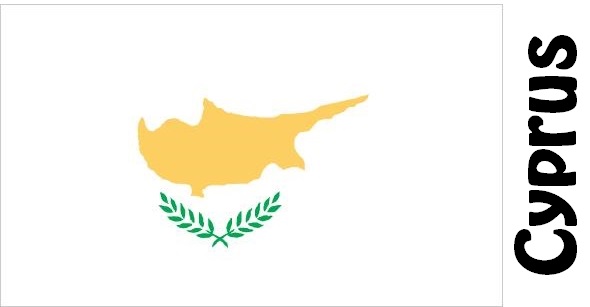
Cyprus is a republic in the eastern Mediterranean. The island is located S for Turkey and Island for Crete. Cyprus has since 1974 been divided into a Greek-Cypriot part and a Turkish-Cypriot part. Most of the island is covered by scrub and most rivers dry out in the summer.
There is a subtropical climate with hot, dry summers and mild, humid winters.
Tourism, offshore business, shipping and financial sectors are of great importance to the economy. The country previously had large deposits of copper. Today, especially asbestos is extracted. The soil is fertile, and agriculture produces, among other things. olives, citrus fruits and grapes.
Cyprus was formally admitted to the EU in 2004. However, only the Greek part of the island is actually involved in the cooperation.
Country Facts – State Capital – Population Graph – Airports – Public Holidays – Embassies of Cyprus – Embassies in Cyprus – Import Regulations – Major Trade Partners – Major Imports – Major Exports
Croatia
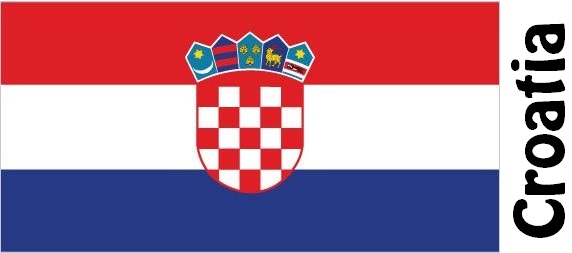
Croatia is a country located in southeastern Europe, on the Adriatic Sea. It is bordered by Slovenia to the northwest, Hungary to the northeast, Serbia to the east, Bosnia and Herzegovina to the southeast, and Montenegro to the southeast. Zagreb, the capital, is the largest city and the country’s cultural and political center. Croatia has a rich history that includes Roman, Venetian, and Austro-Hungarian influences. It was part of Yugoslavia before gaining independence in 1991. Croatia’s economy is based on tourism (especially along the beautiful Dalmatian Coast), manufacturing, and agriculture. The country became a member of the European Union in 2013. Croatian is the official language, and the majority of the population practices Roman Catholicism.
Country Facts:
- Location: Southeastern Europe, along the Adriatic Sea.
- Bordering Countries: Slovenia, Hungary, Serbia, Bosnia and Herzegovina, Montenegro.
- Formal Country Name: Republic of Croatia.
- Capital: Zagreb.
- Population: Approximately 4 million (2024 estimate).
- Language: Croatian (official).
- Currency: Croatian Kuna (HRK).
Country Facts – State Capital – Population Graph – Airports – Public Holidays – Embassies of Croatia – Embassies in Croatia – Import Regulations – Major Trade Partners – Major Imports – Major Exports
Canada
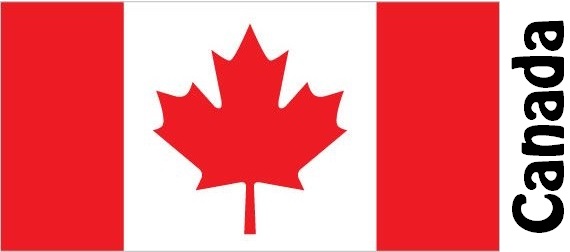
Canada is the second-largest country in the world by land area, located in North America. It is bordered by the United States to the south, the Atlantic Ocean to the east, the Pacific Ocean to the west, and the Arctic Ocean to the north. Ottawa, the capital, is located in the southeastern part of the country, while Toronto is the largest city. Canada is known for its vast natural landscapes, including mountains, forests, and lakes. It has a highly developed economy, with major industries including natural resources (oil, timber, and minerals), technology, and services. Canada is a constitutional monarchy with a parliamentary democracy, and Queen Elizabeth II is the head of state. English and French are the official languages, with French being primarily spoken in Quebec. Canada has a reputation for being one of the most peaceful and welcoming countries in the world.
Country Facts:
- Location: North America.
- Bordering Countries: United States.
- Formal Country Name: Canada.
- Capital: Ottawa.
- Population: Approximately 39 million (2024 estimate).
- Language: English, French (official).
- Currency: Canadian Dollar (CAD).
Country Facts – State Capital – Population Graph – Airports – Public Holidays – Embassies of Canada – Embassies in Canada – Import Regulations – Major Trade Partners – Major Imports – Major Exports
Czech Republic
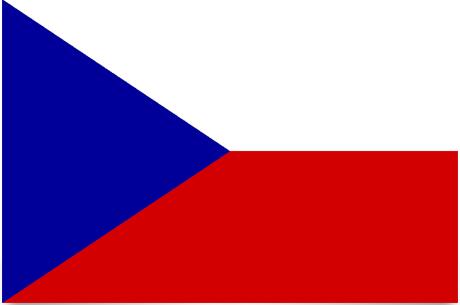
The Czech Republic is a republic in Central Europe. The country is an inland state with borders to Germany, Austria, Slovakia and Poland. The landscape consists of a wooded upland with plateaus and valleys surrounded by low mountains. Several rivers intersect the Czech countryside.
There is temperate mainland climate with hot summers and cold winters.
The country’s most important natural resources are coal, iron ore and timber. In particular, agriculture produces wheat, oats, hops, barley, sugar beet and potatoes. A large part of the Czech Republic’s energy consumption is covered by two nuclear power plants.
In 1993, Czechoslovakia was divided into the two independent countries of the Czech Republic and Slovakia. The Czech Republic has a good economy and is a member of both the EU and NATO.
Country Facts – State Capital – Population Graph – Airports – Public Holidays – Embassies of Czech Republic – Embassies in Czech Republic – Import Regulations – Major Trade Partners – Major Imports – Major Exports
Costa Rica

Costa Rica is a small country located in Central America, bordered by Nicaragua to the north, Panama to the southeast, and the Pacific Ocean to the west and the Caribbean Sea to the east. San José, the capital, is the largest city and serves as the economic, political, and cultural center of the country. Costa Rica is known for its commitment to environmental conservation, with nearly 25% of its land area protected as national parks and reserves. The country has a stable democracy, and it abolished its army in 1949, making it one of the few countries in the world without a military. Costa Rica’s economy is based on tourism, agriculture (especially coffee and bananas), and technology. Spanish is the official language, and the majority of the population practices Roman Catholicism.
Country Facts:
- Location: Central America.
- Bordering Countries: Nicaragua, Panama.
- Formal Country Name: Republic of Costa Rica.
- Capital: San José.
- Population: Approximately 5.3 million (2024 estimate).
- Language: Spanish (official).
- Currency: Costa Rican Colón (CRC).
Country Facts – State Capital – Population Graph – Airports – Public Holidays – Embassies of Costa Rica – Embassies in Costa Rica – Import Regulations – Major Trade Partners – Major Imports – Major Exports
Cuba
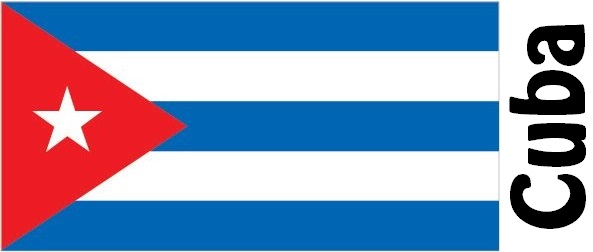
The Republic of Cuba is an island state in the Caribbean made up of Cuba, the largest of the Great Antilles, as well as several smaller islands and coral reefs. The island of Cuba consists of flat to hilly lowlands and plains, mangrove swamps on the south coast as well as mountains in the SE.
The climate is tropical with rainy season in May-November. Hurricanes and tropical cyclones are frequent.
Agriculture is the most important profession. Especially sugar, tobacco, citrus fruits and coffee are grown. Cuba has high deposits of nickel and is one of the world’s leading exporters.
Cuba is a socialist country. Since the 1959 revolution, the country has had a one-party system. After the collapse of the Soviet Union, Cuba has had financial problems, mainly due to US trade boycotts.
Country Facts – State Capital – Population Graph – Airports – Public Holidays – Embassies of Cuba – Embassies in Cuba – Import Regulations – Major Imports – Major Exports
Chile

Chile is a long, narrow country located on the western edge of South America, bordered by the Pacific Ocean to the west, Peru to the north, Bolivia to the northeast, and Argentina to the east. Santiago, the capital, is the largest city and the economic and cultural center of the country. Chile is known for its diverse geography, which includes the Atacama Desert in the north, the Andes mountains to the east, and lush forests and fjords in the south. The country has a stable and highly developed economy, with major industries including copper mining, agriculture (especially wine and fruit), and forestry. Chile’s political system is a presidential republic, and Spanish is the official language. The majority of the population practices Christianity, primarily Roman Catholicism.
Country Facts:
- Location: South America, along the Pacific Ocean.
- Bordering Countries: Peru, Bolivia, Argentina.
- Formal Country Name: Republic of Chile.
- Capital: Santiago.
- Population: Approximately 19 million (2024 estimate).
- Language: Spanish (official).
- Currency: Chilean Peso (CLP).
Country Facts – State Capital – Population Graph – Airports – Public Holidays – Embassies of Chile – Embassies in Chile – Import Regulations – Major Trade Partners – Major Imports – Major Exports
Colombia

Colombia is located in the northern part of South America, bordered by Venezuela to the east, Brazil to the southeast, Peru to the south, Ecuador and Panama to the west, and the Caribbean Sea to the north. Bogotá, the capital, is located in the Andean highlands. Colombia has a rich history, including pre-Colombian civilizations, Spanish colonization, and independence in the early 19th century. The country is known for its coffee, flowers, and emeralds, and it has a growing economy based on oil, mining, agriculture, and services. Colombia has made significant progress in improving security and reducing violence in recent years, although challenges remain. Spanish is the official language, and Roman Catholicism is the predominant religion.
Country Facts:
- Location: Northern South America, bordering the Caribbean Sea.
- Bordering Countries: Venezuela, Brazil, Peru, Ecuador, Panama.
- Formal Country Name: Republic of Colombia.
- Capital: Bogotá.
- Population: Approximately 53 million (2024 estimate).
- Language: Spanish (official).
- Currency: Colombian Peso (COP).
Country Facts – State Capital – Population Graph – Airports – Public Holidays – Embassies of Colombia – Embassies in Colombia – Import Regulations – Major Trade Partners – Major Imports – Major Exports
Cameroon

Cameroon is located in Central Africa, bordered by Nigeria to the west, Chad to the northeast, the Central African Republic to the east, and Equatorial Guinea, Gabon, and the Republic of the Congo to the south. Douala is the largest city, and Yaoundé is the capital. Known as “Africa in miniature” due to its diverse geography, Cameroon is home to rainforests, savannas, and mountainous regions, as well as a rich cultural mix of ethnic groups. Cameroon was colonized by both the Germans and the French, with the latter controlling the majority of the country until independence in 1960. The economy is based on agriculture, petroleum, mining, and timber. French and English are the official languages, and the majority of Cameroonians practice Christianity, though there are significant Muslim and indigenous religious communities.
Country Facts:
- Location: Central Africa.
- Bordering Countries: Nigeria, Chad, Central African Republic, Equatorial Guinea, Gabon, Republic of the Congo.
- Formal Country Name: Republic of Cameroon.
- Capital: Yaoundé.
- Population: Approximately 28 million (2024 estimate).
- Language: French, English (official).
- Currency: Central African CFA Franc (XAF).
Country Facts – State Capital – Population Graph – Airports – Public Holidays – Embassies of Cameroon – Embassies in Cameroon – Import Regulations – Major Imports – Major Exports
Central African Republic
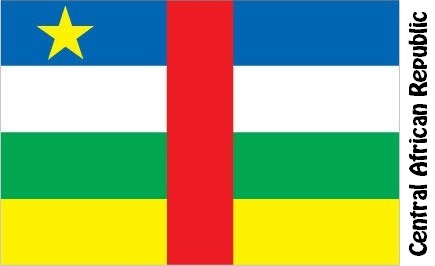
The Central African Republic (CAR) is located in the heart of Africa, bordered by Chad to the north, Sudan to the east, South Sudan to the southeast, the Republic of the Congo to the south, Cameroon to the west, and the Democratic Republic of the Congo to the southwest. Bangui, the capital, is located on the Ubangi River. CAR has a rich history of ethnic diversity and natural resources, including timber, gold, and diamonds. However, the country has struggled with political instability and armed conflicts, which have hindered its development. The economy is based on agriculture, mining, and timber, and the country is one of the poorest in the world. French and Sango are the official languages, and the majority of the population practices Christianity, with a significant Muslim minority.
Country Facts:
- Location: Central Africa.
- Bordering Countries: Chad, Sudan, South Sudan, Republic of the Congo, Cameroon, Democratic Republic of the Congo.
- Formal Country Name: Central African Republic.
- Capital: Bangui.
- Population: Approximately 5 million (2024 estimate).
- Language: French, Sango (official).
- Currency: Central African CFA Franc (XAF).
Country Facts – State Capital – Population Graph – Airports – Public Holidays – Embassies of Central African Republic – Embassies in Central African Republic – Import Regulations – Major Imports – Major Exports
Comoros
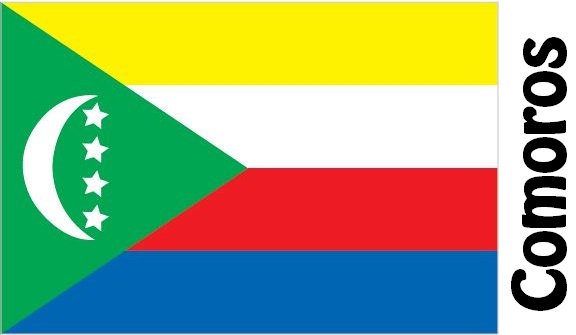
The Comoros is an island nation located in the Indian Ocean, off the east coast of Africa, between Madagascar and Mozambique. The country consists of three main islands: Grande Comore, Mohéli, and Anjouan, and several smaller islands. Moroni, the capital, is located on Grande Comore. The Comoros has a diverse cultural heritage, influenced by African, Arab, French, and Malagasy traditions. The country gained independence from France in 1975 and has faced political instability and coups in its history. The economy is based on agriculture, particularly the production of ylang-ylang (a fragrant flower), vanilla, and cloves, as well as fishing. The majority of the population practices Islam, and Arabic, French, and Comorian are the official languages.
Country Facts:
- Location: Indian Ocean, between Madagascar and Mozambique.
- Bordering Countries: None (island nation).
- Formal Country Name: Federal Islamic Republic of the Comoros.
- Capital: Moroni.
- Population: Approximately 850,000 (2024 estimate).
- Language: Comorian, Arabic, French (official).
- Currency: Comorian Franc (KMF).
Country Facts – State Capital – Population Graph – Airports – Public Holidays – Embassies of Comoros – Embassies in Comoros – Import Regulations – Major Imports – Major Exports
Cape Verde
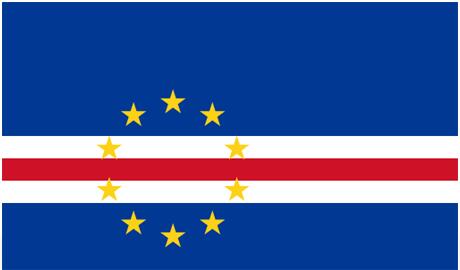
Cape Verde is an island country located in the central Atlantic Ocean, off the west coast of Africa. It consists of 10 volcanic islands, with Praia as the capital and largest city. The islands have a rich cultural heritage, shaped by Portuguese colonialism and African influences. Cape Verde gained independence from Portugal in 1975 and has since developed a stable economy, primarily based on services, including tourism, and remittances from its expatriate community. The country is known for its beautiful beaches, mountainous terrain, and vibrant music scene, particularly its distinctive genre called morna. Portuguese is the official language, and Catholicism is the predominant religion.
Country Facts:
- Location: Central Atlantic Ocean, off the west coast of Africa.
- Bordering Countries: None (island nation).
- Formal Country Name: Republic of Cabo Verde.
- Capital: Praia.
- Population: Approximately 550,000 (2024 estimate).
- Language: Portuguese (official), Cape Verdean Creole (widely spoken).
- Currency: Cape Verdean Escudo (CVE).
Country Facts – State Capital – Population Graph – Airports – Public Holidays – Embassies of Cape Verde – Embassies in Cape Verde – Import Regulations – Major Imports – Major Exports
Chad
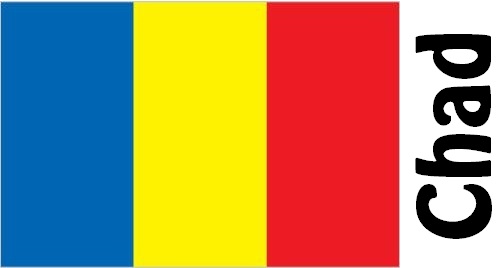
Chad is a landlocked country in Central Africa, bordered by Libya to the north, Sudan to the east, the Central African Republic to the south, Cameroon and Nigeria to the southwest, and Niger to the west. N’Djamena, the capital and largest city, is located in the western part of the country near the border with Cameroon. Chad has a history of ethnic and regional conflicts, and it faces challenges related to poverty, political instability, and security issues. The economy is based on oil production, agriculture (particularly cotton and livestock), and gold mining. Arabic and French are the official languages, and Islam is the dominant religion, with Christianity and indigenous beliefs practiced by smaller groups.
Country Facts:
- Location: Central Africa.
- Bordering Countries: Libya, Sudan, Central African Republic, Cameroon, Nigeria, Niger.
- Formal Country Name: Republic of Chad.
- Capital: N’Djamena.
- Population: Approximately 18 million (2024 estimate).
- Language: Arabic, French (official).
- Currency: Central African CFA Franc (XAF).
Country Facts – State Capital – Population Graph – Airports – Public Holidays – Embassies of Chad – Embassies in Chad – Import Regulations – Major Imports – Major Exports
Cambodia
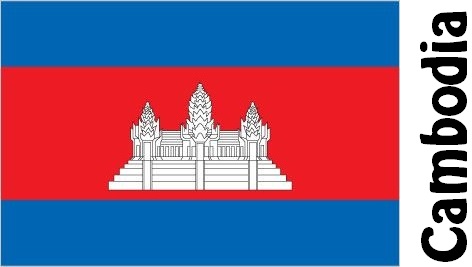
Cambodia is a country located in Southeast Asia, bordered by Thailand to the west, Laos to the north, Vietnam to the east and south, and the Gulf of Thailand to the southwest. Phnom Penh is the capital and largest city, and Siem Reap, home to the famous Angkor Wat temple complex, is a major cultural and tourist destination. Cambodia has a rich history, including the powerful Khmer Empire, which flourished between the 9th and 15th centuries and built some of the world’s most iconic religious monuments. The country was under French colonial rule from 1863 to 1953 and suffered immensely during the Khmer Rouge regime from 1975 to 1979, which resulted in the deaths of nearly a quarter of the population. Cambodia has since rebuilt its economy, which is largely based on agriculture, manufacturing (particularly garments), and tourism. Khmer is the official language, and Buddhism is the predominant religion.
Country Facts:
- Location: Southeast Asia.
- Bordering Countries: Thailand, Laos, Vietnam.
- Formal Country Name: Kingdom of Cambodia.
- Capital: Phnom Penh.
- Population: Approximately 17 million (2024 estimate).
- Language: Khmer (official).
- Currency: Cambodian Riel (KHR).
Country Facts – State Capital – Population Graph – Airports – Public Holidays – Embassies of Cambodia – Embassies in Cambodia – Import Regulations – Major Trade Partners – Major Imports – Major Exports
China

China is the world’s most populous country, located in East Asia. It shares borders with 14 countries, including India, Russia, Mongolia, and several Southeast Asian nations. Beijing is the capital, while Shanghai is the largest city and a major global financial hub. China has a long and rich history, with ancient civilizations dating back over 4,000 years. The country is known for its contributions to art, philosophy, and science, as well as its iconic landmarks such as the Great Wall and the Forbidden City. Modern China became a communist state in 1949 after the Chinese Civil War. Today, China has the second-largest economy in the world, driven by manufacturing, technology, and exports. Mandarin is the official language, and the majority of the population practices various forms of Buddhism, Taoism, and Confucianism, with a significant minority following Christianity and Islam.
Country Facts:
- Location: East Asia.
- Bordering Countries: India, Russia, Mongolia, Nepal, Pakistan, and more.
- Formal Country Name: People’s Republic of China.
- Capital: Beijing.
- Population: Approximately 1.4 billion (2024 estimate).
- Language: Mandarin Chinese (official).
- Currency: Renminbi (RMB), Chinese Yuan (CNY).
Country Facts – State Capital – Population Graph – Airports – Public Holidays – Embassies of China – Embassies in China – Import Regulations – Major Trade Partners – Major Imports – Major Exports
Côte d’Ivoire (Ivory Coast)
Côte d’Ivoire, or Ivory Coast, is a country located in West Africa, bordered by Liberia to the west, Guinea to the northwest, Mali to the north, Burkina Faso to the northeast, and Ghana to the east, with the Atlantic Ocean to the south. Yamoussoukro is the political capital, while Abidjan is the country’s largest city and economic hub. Côte d’Ivoire has a diverse culture, with more than 60 ethnic groups and various languages spoken, including French, which is the official language. The country’s economy is based on agriculture, especially cocoa and coffee, of which it is one of the world’s largest producers. Côte d’Ivoire has faced political instability and civil war in recent decades, but it has made progress in rebuilding its economy. Islam and Christianity are the dominant religions.
Country Facts:
- Location: West Africa, along the Atlantic Ocean.
- Bordering Countries: Liberia, Guinea, Mali, Burkina Faso, Ghana.
- Formal Country Name: Republic of Côte d’Ivoire.
- Capital: Yamoussoukro (political), Abidjan (economic).
- Population: Approximately 26 million (2024 estimate).
- Language: French (official), numerous indigenous languages.
- Currency: West African CFA Franc (XOF).
Cook Islands
The Cook Islands is a self-governing territory in the South Pacific Ocean, in free association with New Zealand. It consists of 15 islands, including Rarotonga, the largest and most populous island, where the capital, Avarua, is located. The Cook Islands is known for its pristine beaches, lagoons, and vibrant culture, with traditional Polynesian customs playing an important role in daily life. Tourism is the primary industry, along with agriculture and fishing. The Cook Islands has a compact relationship with New Zealand, which is responsible for its defense and foreign policy, but it governs its own internal affairs. English and Cook Islands Māori are the official languages, and Christianity is the dominant religion.
Country Facts:
- Location: South Pacific Ocean.
- Bordering Countries: None (territory of New Zealand).
- Formal Country Name: Cook Islands.
- Capital: Avarua (on Rarotonga).
- Population: Approximately 18,000 (2024 estimate).
- Language: English, Cook Islands Māori (official).
- Currency: New Zealand Dollar (NZD), Cook Islands Dollar (CKD).













































